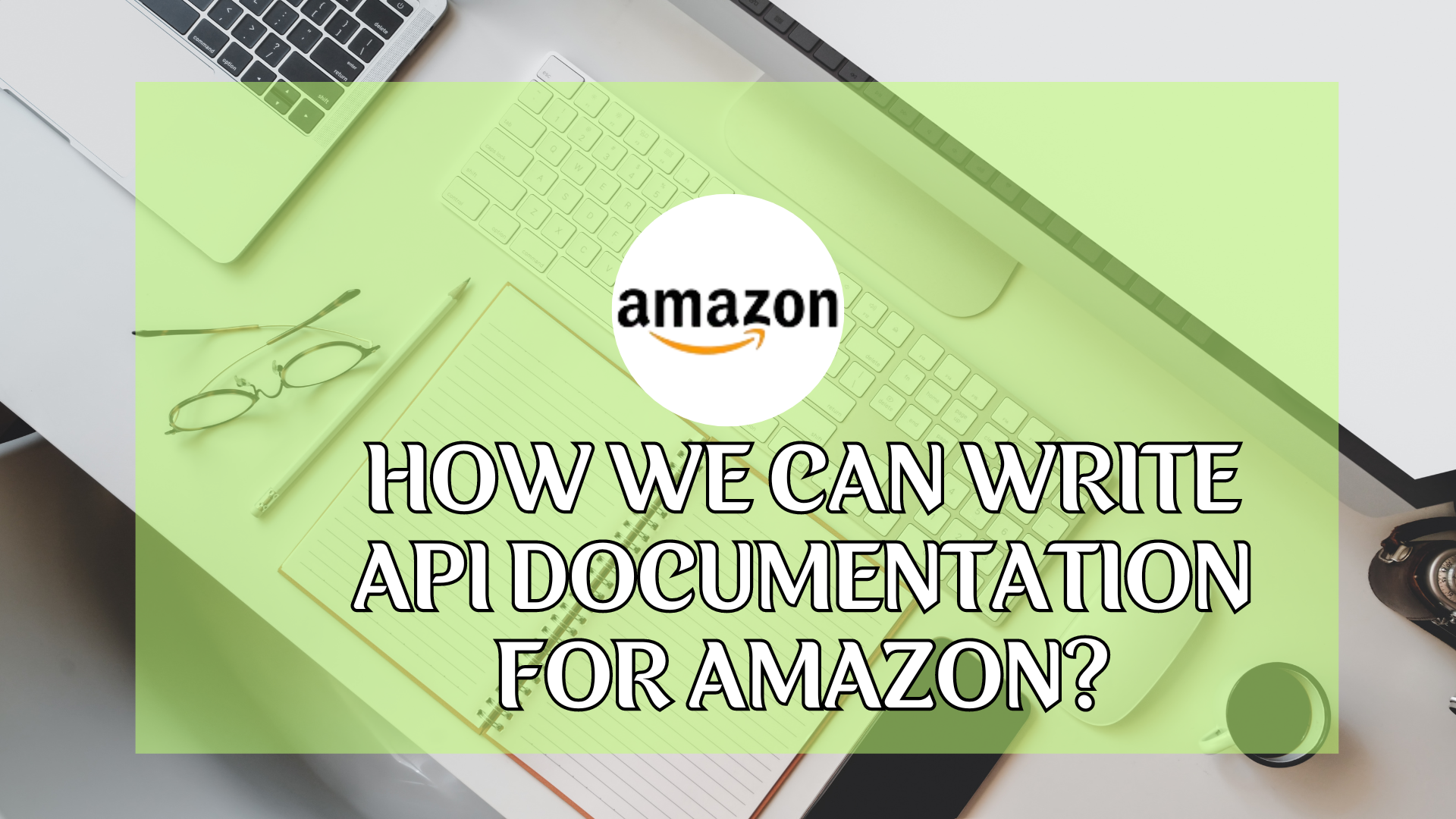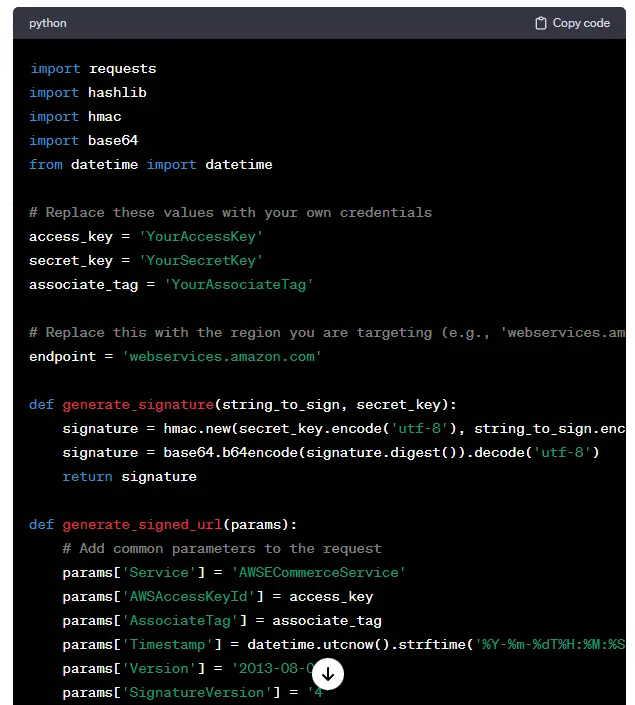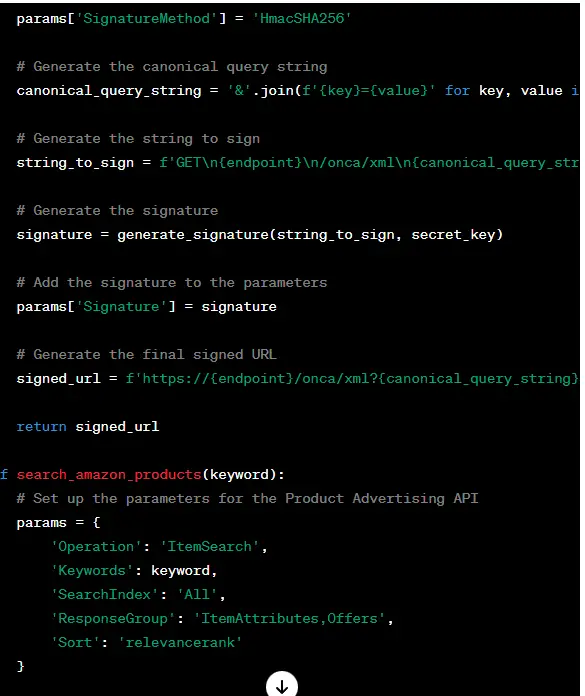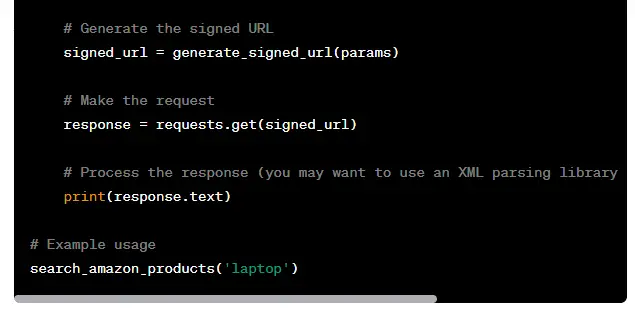Welcome to (International Stories) in this article we will discuss, How we can write API documentation for Amazon? Completely read this article I hope you like this.

How we can write API documentation for Amazon?
Amazon provides the Product Advertising API (PA API) for developers who want to access Amazon product data. However, please note that API documentation and details may have changed since then. To get the most accurate and up-to-date information, it’s recommended to visit the official Amazon Developer portal.
Here’s a general guide on how to access the Amazon Product Advertising API documentation:
Amazon Developer Account:
Create an Amazon Developer account if you don’t have one already. You can do this by visiting the Amazon Developer portal.
Join the Amazon Associates Program:
To use the Product Advertising API, you need to be a member of the Amazon Associates Program. You can join the program through the same developer account.
Create an API Key:
Once you’ve joined the Amazon Associates Program, you can create an API key. This key is essential for making requests to the Product Advertising API.
Access API Documentation:
Visit the Amazon Product Advertising API documentation to get detailed information on the available operations, request parameters, and response data.
Read the Getting Started Guide:
Amazon provides a Getting Started Guide that walks you through the process of setting up and making your first API request. Make sure to follow this guide for a smooth start.
API Reference:
Refer to the API reference documentation for a detailed description of each API operation, including sample requests and responses. The reference documentation is typically organized by the type of request or operation.
Use API Libraries and SDKs:
Amazon provides SDKs (Software Development Kits) in various programming languages to simplify the integration process. These SDKs often include pre-built functions for making requests to the API.
Compliance with Amazon Policies:
Ensure that your usage of the API complies with Amazon’s policies and guidelines. Violating these policies can result in the suspension of your API access.
Amazon provides an API called the Product Advertising API (PA API) that allows developers to access product information and other data from Amazon. Please note that API documentation and examples may change over time, so it’s a good idea to check the official Amazon API documentation for the most up-to-date information.
Here’s a basic example of how you might use the Amazon Product Advertising API in Python:



Remember to replace ‘YourAccessKey’, ‘YourSecretKey’, and ‘YourAssociateTag’ with your own Amazon API credentials. Also, ensure that you comply with Amazon’s API usage policies and guidelines.
Keep in mind that the actual code for interacting with the Amazon API may vary depending on your programming language and specific requirements. Additionally, it’s important to check the most recent version of the Amazon Product Advertising API documentation for any updates or changes.
Anne Klein Women’s AK/1470 Bangle Watch and Bracelet Set
What is a good API documentation?
Good API documentation is crucial for developers to understand how to use an API effectively. Here are some key characteristics of well-crafted API documentation:
Clear and Concise:
Information should be presented in a clear and concise manner, avoiding unnecessary jargon.
Use simple language and provide examples to enhance understanding.
Thorough and Comprehensive:
Cover all aspects of the API, including endpoints, request and response formats, error handling, and authentication.
Include information on rate limiting, pagination, and any other relevant considerations.
Easy to Navigate:
Provide a well-organized structure with a table of contents, clear sections, and a search functionality.
Use hyperlinks to allow users to quickly jump between different sections.
Quick Start Guide:
Include a quick start guide or tutorial that helps developers get up and running with the API in a minimal amount of time.
Provide step-by-step instructions for making a simple API call.
Examples and Samples:
Include plenty of code examples in different programming languages.
Provide real-world use cases and scenarios to illustrate how the API can be used.
Interactive API Explorer:
If possible, include an interactive API explorer that allows users to make API calls directly from the documentation.
This helps developers experiment with the API without leaving the documentation.
Detailed Request and Response Examples:
Clearly document the expected format for requests and responses.
Include sample requests and responses with explanations for each field.
Authentication Information:
Clearly explain the authentication process, including the types of authentication supported (e.g., API keys, OAuth).
Provide guidance on obtaining and managing API keys or tokens.
Error Handling:
Document all possible error codes and messages.
Explain common error scenarios and how developers can troubleshoot issues.
Versioning Information:
If the API has different versions, clearly document the versioning scheme and how developers can specify the version in their requests.
Change Log:
Maintain a change log that highlights any updates, additions, or changes to the API.
Include information on deprecated features and upcoming changes.
Community Support:
Provide links to forums, community groups, or support channels where developers can seek help or discuss issues related to the API.
Remember that the goal is to make it as easy as possible for developers to understand, implement, and troubleshoot using the API.
What is the best tool for API documentation?
There are several tools available for API documentation, and the best one for you depends on your specific needs and preferences. Here are some popular choices:
Swagger/OpenAPI: Swagger is a widely used framework for API documentation. It allows you to describe your API in a standard way using the OpenAPI Specification, and it provides tools to generate documentation automatically.
Postman: Postman is a popular API development and testing tool that also offers API documentation capabilities. You can create and publish API documentation directly within the Postman platform.
Apiary: Apiary is a collaborative API design platform that allows you to design, document, and test APIs. It uses a simple markdown-based language called API Blueprint to describe APIs.
Redoc: Redoc is a powerful, open-source API documentation tool that focuses on providing a clean, responsive, and interactive documentation experience. It supports the OpenAPI Specification.
Swagger UI: Swagger UI is part of the Swagger ecosystem and allows you to visualize and interact with your API’s documentation. It’s especially useful if you’re already using Swagger for API definition.
GitBook: GitBook is a versatile documentation platform that supports API documentation. It provides a clean and customizable interface and allows you to version control your documentation using Git.
ReadMe: ReadMe is a comprehensive documentation platform that supports API documentation. It offers features such as interactive API explorers, code samples, and a collaborative environment for teams.
Slate: Slate is a lightweight API documentation tool that uses Markdown for documentation. It provides a simple and elegant documentation format, and the output is visually appealing.
Ultimately, the best tool depends on your specific requirements, such as the complexity of your API, collaboration needs, and the preferred format for documentation. Consider factors like ease of use, customization options, and integration capabilities when choosing the tool that best fits your needs.
What is the standard for API documentation?
The standard for API documentation can vary depending on the industry, organization, and specific needs of developers. However, there are some common elements and best practices that are generally considered when creating API documentation. Here are some key aspects:
Clear and Concise Information:
Provide a clear overview of what the API does and its main functionalities.
Use concise language to explain concepts and features.
Getting Started Guide:
Include a quick start guide that helps developers get up and running with the API quickly.
Provide sample code snippets for common use cases.
Authentication and Authorization:
Clearly explain the authentication and authorization mechanisms required to access the API.
Include details on how to obtain API keys or tokens.
Endpoint Reference:
Document each API endpoint, including the URL, supported HTTP methods, request and response formats, and any required parameters.
Provide examples of requests and responses.
Error Handling:
Document error codes and messages that developers might encounter.
Include guidance on how to troubleshoot common issues.
Rate Limiting:
Specify any rate limiting or throttling policies in place.
Clearly communicate how developers can handle rate-limiting errors.
Data Formats:
Clearly specify the data formats supported by the API (e.g., JSON, XML).
Provide examples of request and response payloads.
SDKs and Code Samples:
Offer SDKs (Software Development Kits) in popular programming languages.
Provide code samples and examples for different programming languages.
Interactive API Explorer:
If possible, include an interactive API explorer that allows developers to make API requests directly from the documentation.
Changelog and Versioning:
Maintain a changelog that highlights any changes, additions, or deprecations in each API version.
Clearly communicate the API versioning strategy.
Support and Community:
Provide contact information for support.
Encourage developers to participate in forums or communities for discussions and issue reporting.
Security Considerations:
Include information on security best practices when using the API.
Clearly outline any security measures implemented by the API.
Use Case Examples:
Include real-world use case examples to illustrate how the API can be applied.
It’s important to keep API documentation up-to-date as the API evolves and to gather feedback from developers to continually improve the documentation. Tools like Swagger/OpenAPI, RAML, and API Blueprint are commonly used for designing and documenting APIs.
What are the API requirements?
To use the OpenAI GPT-3 API, you need to meet certain requirements and follow specific guidelines. As of my last knowledge update in January 2022, here are the general requirements:
OpenAI Account:
You need to have an account on the OpenAI platform.
API Key:
Obtain an API key from OpenAI. The API key is essential for making requests to the GPT-3 API.
API Documentation:
Familiarize yourself with the official OpenAI GPT-3 API documentation. It provides detailed information on how to structure requests, handle responses, and use the different features of the API.
Compliance with OpenAI’s Use Case Policies:
Make sure that your use of the GPT-3 API complies with OpenAI’s use case policies. OpenAI has specific guidelines on acceptable and unacceptable use cases, and you should adhere to them.
Testing and Experimentation:
It’s recommended to start with the OpenAI Playground, a web-based interface that allows you to interact with GPT-3 in a sandboxed environment. This can help you understand how to structure requests and handle responses before integrating the API into your own applications.
Integration into Your Application:
Once you are familiar with the API, you can integrate it into your own applications or systems. This involves making HTTP requests to OpenAI’s API endpoint using the appropriate headers, parameters, and payload.
Security Measures:
Implement necessary security measures to protect your API key. Keep it confidential and avoid exposing it in client-side code or public repositories.
Billing and Pricing:
Understand OpenAI’s billing and pricing structure. The usage of the GPT-3 API is typically associated with costs, and you should be aware of how pricing is calculated.
How does product hunt make money 2024?
Is Amazon Prime free for students?




